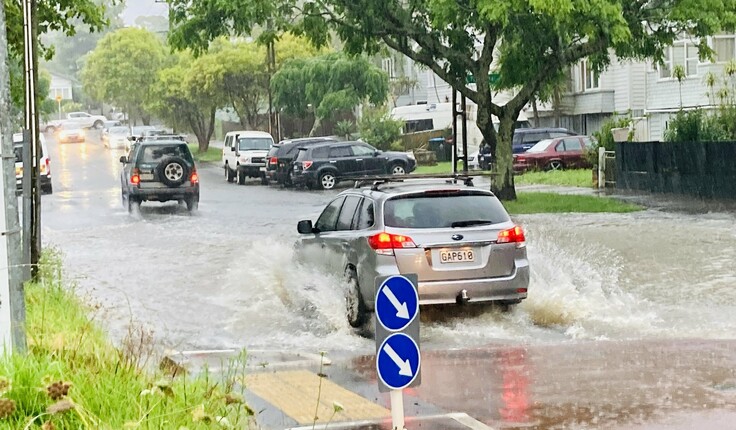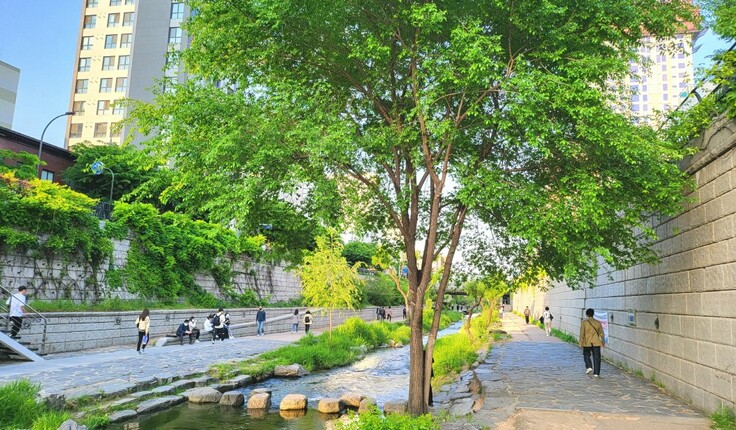News
Daylighting Auckland's Waterways: Dr Matthew Bradbury
Posted 13 03 2023
in News

Tomorrow (Tuesday March 14 2023) is the International Day of Action for Rivers. It’s a day dedicated to saving, celebrating and creating awareness about the importance of rivers and waterways.
It comes as landscape architect, associate professor at Unitec, and author Matthew Bradbury, reiterates his call for the daylighting of city waterways and wetlands to help prevent flood events like those seen in Tāmaki Makaurau Auckland on January 27.
Dr Bradbury, who is also on the NZILA’s Climate Action Working group spoke to Radio New Zealand’s Nine to Noon host Kathryn Ryan last Friday. His vision is for a greener Auckland where the city brings back and controls the waterways “in a way which slows the water down and prevents flooding.”
He believes city planners and designers need to go back to considering the landscapes we are living on. In Auckland, residents are basically living on top of a catchment.
“A catchment is like a valley and it's full of bush and has a stream going down the middle.The bush and the ground absorbs all the water and then the excess water goes into the stream. So when we urbanise, we cut all the trees down and we cover everything up with concrete and buildings,” he says.
January 27 served as a reminder to Auckland that it is not impervious to flooding events. The word impervious is important here: it pertains to the impenetrable surfaces used for roads, buildings, and other urban infrastructure. Matthew explains; “what happens is the water falls on that impervious surface, it can't go anywhere. It can't be absorbed.”

He also referenced his book, Water City: Practical Strategies for Climate Change, which investigates the effect of increasing permeable or pervious surfaces in urban areas. “We need to have more green space, and that's going to help us when the next flood comes,” he says.
He says greening the city gives water more opportunities to be absorbed by the soil, in addition to finding more direct routes into rivers and streams which previously were paved in.
International examples provide success stories not just for flood prevention, but also in making rivers a key attraction in terms of landscape architecture. Matthew provides a big-ticket case with the 2005 project to daylight Seoul’s Cheonggyecheon Stream. “It can absorb 200 year floods, it has increased biodiversity, it has increased plants and fish It has reduced the urban heat around that area,” he explains. “It's actually produced this fantastic public space in the middle of a very, very busy city.”
He believes the impacts of the recent flooding events in Auckland could have been reduced by making more of an effort to design the city around its rivers, streams, and wetlands, not the other way around.
He’s passionate about the merits of changing the way we view water, in many cases by literally bringing it back into view.
You can hear the full Radio New Zealand interview with Matthew in the audio file below.
Dr Matthew Bradbury on Daylighting urban waterways
RNZ Nine to Noon - Listen here
Share
16 Dec
National hui on RMA reforms - register now

Your prompt response appreciated
Last Thursday we shared an update outlining the Government’s proposed replacement of the RMA and the significant implications these Bills …
10 Dec
Proposed replacement of the RMA: Planning Bill and Natural Environment Bill

A message from the Environmental Legislation Working Group
On Tuesday this week, the Government released proposed bills to replace the Resource Management Act 1991. Reform of our planning …
03 Dec
Newly Registered Landscape Architects 2025

Celebrating professional achievement across Aotearoa The 2025 Registration process is now nearing completion, and we are delighted to acknowledge the …
Events calendar
Full 2025 calendar